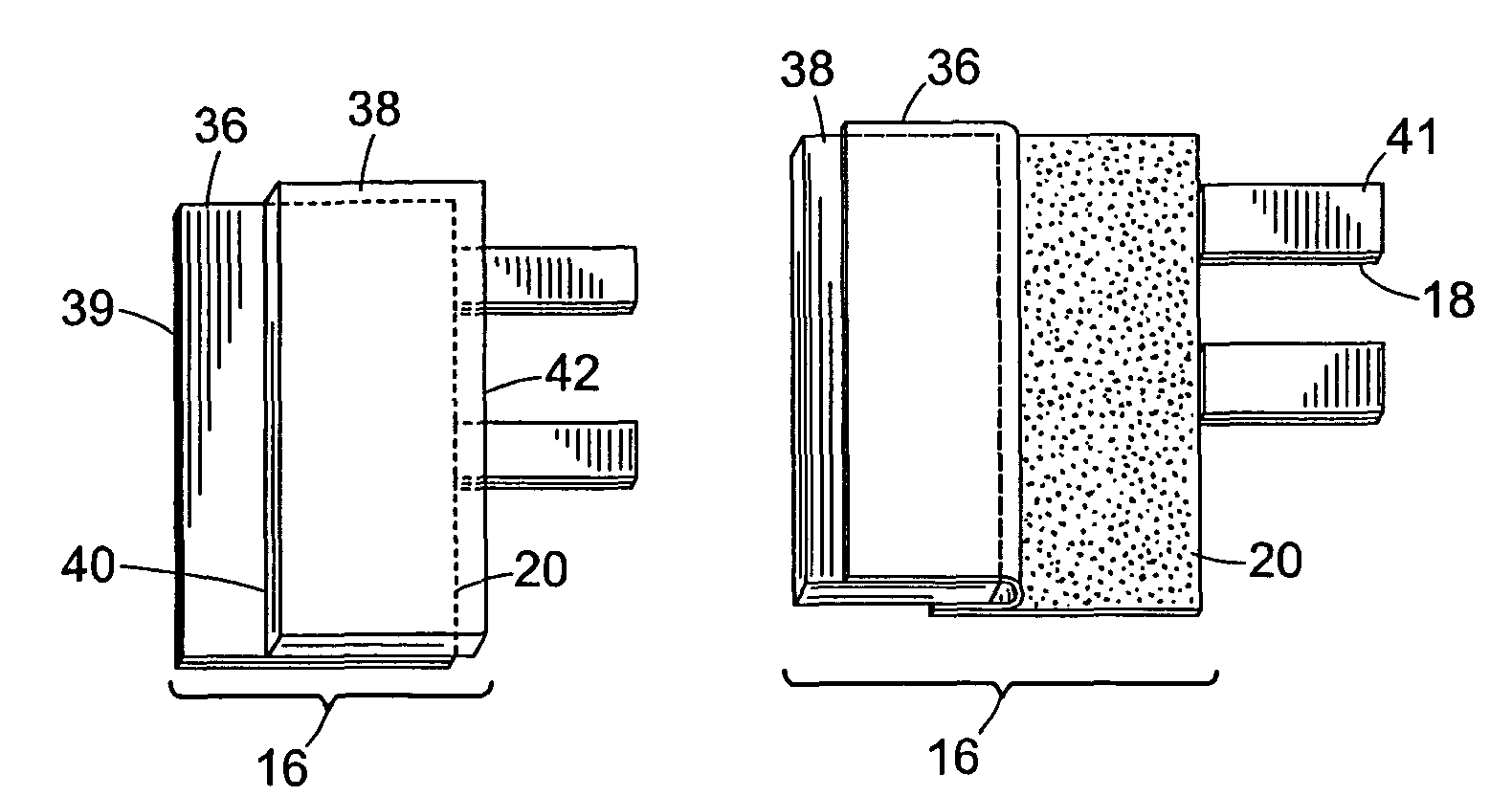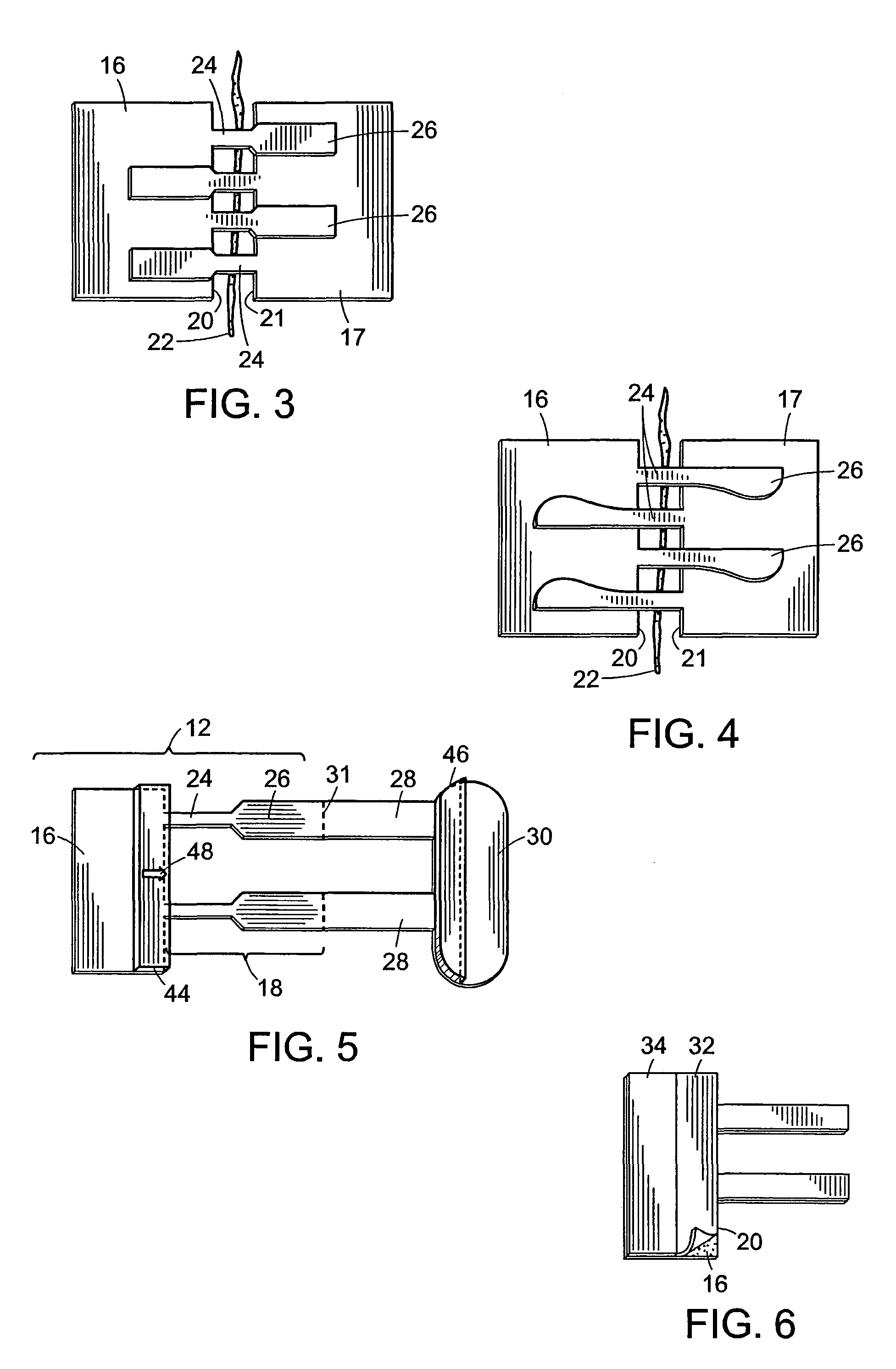Device for laceration or incision closure
a technology applied in the field of laceration or incision closure, can solve the problems of unsatisfactory stretching, unable to meet the needs of patients, and the stock must be substantially inelastic, so as to improve the translation of force, reduce the effect of stretching and reducing the amount of for
- Summary
- Abstract
- Description
- Claims
- Application Information
AI Technical Summary
Benefits of technology
Problems solved by technology
Method used
Image
Examples
Embodiment Construction
[0046]The two components (12 and 14) of a two-component device of the present invention (10) are shown in FIG. 1. First component (12) includes an anchoring member (16) and a plurality of connecting members (18) extending from a first edge of the device (20) which is also referred to herein as the wound edge. Similarly, the second component (14) includes an anchoring member (17) and a plurality of connecting members (19) extending from a first edge (21) of the device which is also referred to as a wound edge. Anchoring members (16 and 17) have a lower surface (not shown in FIG. 1) which is coated with an adhesive suitable for attachment of the components to the skin. In preferred embodiments, a portion of the lower surface (not shown in FIG. 1) of connecting members (18 and 19) are coated with an adhesive for attachment of the connecting members of one component to the anchoring member of the second component. An incision (22) is also shown in an open state.
[0047]Referring to FIG. 2...
PUM
 Login to View More
Login to View More Abstract
Description
Claims
Application Information
 Login to View More
Login to View More - R&D
- Intellectual Property
- Life Sciences
- Materials
- Tech Scout
- Unparalleled Data Quality
- Higher Quality Content
- 60% Fewer Hallucinations
Browse by: Latest US Patents, China's latest patents, Technical Efficacy Thesaurus, Application Domain, Technology Topic, Popular Technical Reports.
© 2025 PatSnap. All rights reserved.Legal|Privacy policy|Modern Slavery Act Transparency Statement|Sitemap|About US| Contact US: help@patsnap.com



